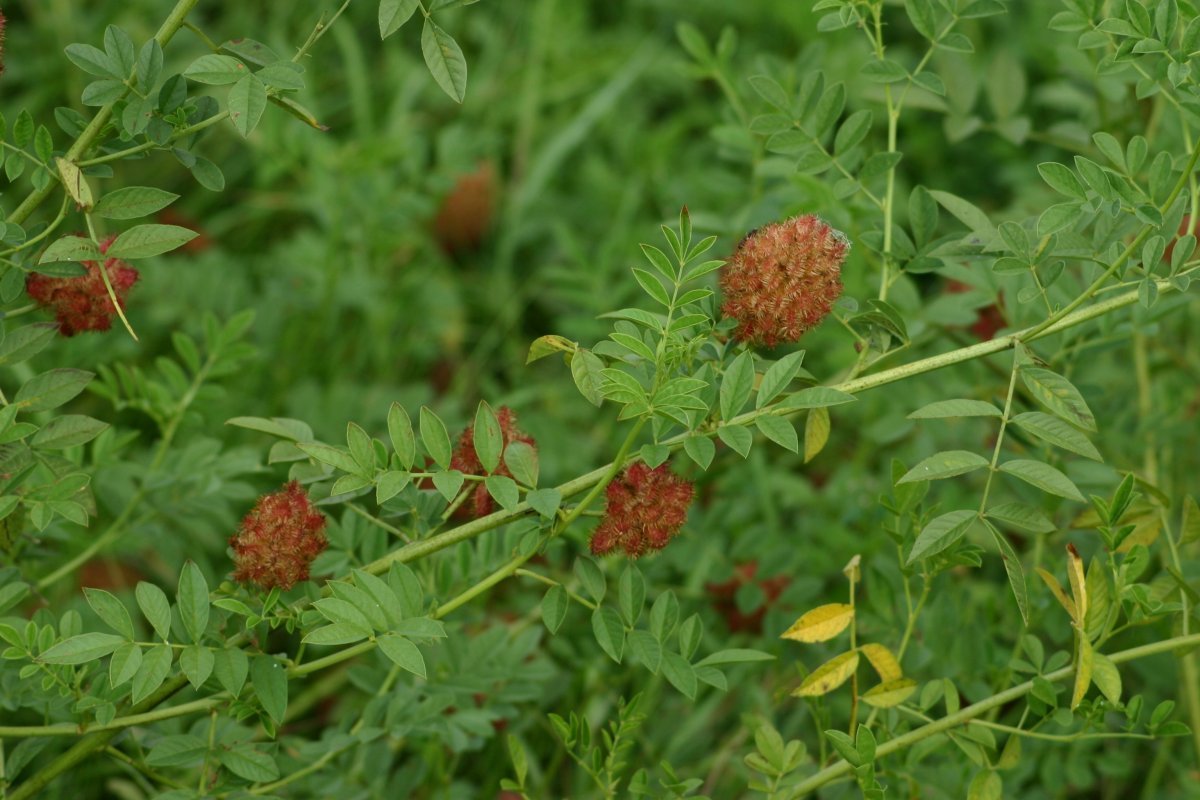Glycyrrhiza echinata L. - Fabaceae - Russian liqourice, Russische Lakritze, Östliches Süßholz
Perennial herb, native to south-eastern Europe and adjacent parts of West Asia; spikes of pale blue flowers; pods bright red to red-brown. http://www.plantarium.ru/page/image/id/198408.html
Roots are lesser sweet than from the other sources of liquorice and the volatiles are very different, with mainly β-caryophyllene oxide (21-24%), (2E,4E)-decadienal (18-20%), humulene epoxide II (10-11%), (E)-2-heptenal, 5-methyl-furfural, (2E,4E)-heptadienol, (E)-2-octen-1-al, and (2E,4Z)-decadienal.
[Volatiles Profiling in Medicinal Licorice Roots Using Steam Distillation and Solid‐Phase Microextraction (SPME) Coupled to Chemometrics. Farag, M. A., & Wessjohann, L. A. , Journal of food science, Vol.77(11), 2012, 1179-1184]
„The nucleotide sequences of ribulose-1,5-bisphosphate carboxylase/oxygenase large subunit gene (rbcL) of Glycyrrhiza glabra, G. uralensis, G. inflata, G. echinata, G. macedonica and G. pallidiflora have been determined to construct their phylogenetic tree. Based on these sequences, the six Glycyrrhiza species were divided into two groups: three, G. glabra, G. uralensis, and G. inflata, which produce glycyrrhizin as a major saponin, and the others, G. echinata, G. macedonica and G. pallidiflora, which produce macedonoside C as a major saponin.“
[Phylogenetic relationship of six Glycyrrhiza species based on rbcL sequences and chemical constituents. Hayashi, H., Hosono, N., Kondo, M., Hiraoka, N., Ikeshiro, Y., Shibano, M., … & Inoue, K., Biological & pharmaceutical bulletin, Vol.23(5), 2000, 602-606]

Glycyrrhiza echinata, Krasnodar, Russia (2025) © AndraTemruk CC BY-SA 4.0 inaturalist.org

Glycyrrhiza echinata L.
Nees von Esenbeck, T.F.L., Plantae officinales, vol.1 (1828-1833) [A.Henry] plantgenera.org
